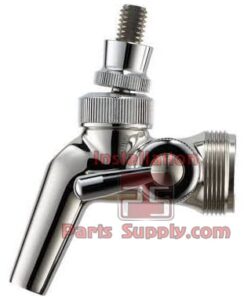
Introduction: The Trulife Distribution lawsuit has sparked widespread interest and debate within the consumer goods industry, raising questions about ethical business practices, consumer protection, and corporate accountability. As legal proceedings unfold, it is essential to analyze the case from various perspectives to gain a comprehensive understanding of its implications. In this article, we delve into the Trulife Distribution lawsuit, examining different viewpoints and offering critical analysis to shed light on its significance.
Background of the Trulife Distribution Lawsuit: Trulife Distribution, a prominent player in the consumer goods market, has found itself entangled in a legal battle following allegations of deceptive marketing practices and violations of consumer protection laws. The lawsuit, filed by consumer advocacy groups and individuals, accuses Trulife Distribution of misleading consumers through false advertising claims, product misrepresentation, and inadequate disclosure of potential risks associated with its products.
Perspectives on the Lawsuit:
- Consumer Perspective: From the consumer’s standpoint, the Trulife Distribution lawsuit raises concerns about trust, transparency, and accountability. Consumers who purchased products from the company may feel deceived and betrayed by false advertising claims and exaggerated product benefits. The lawsuit highlights the importance of consumer rights and the need for companies to prioritize honesty and integrity in their marketing practices. Consumers expect transparency and accurate information about the products they purchase, and the outcome of the lawsuit will determine whether Trulife Distribution meets these expectations.
- Legal Perspective: From a legal standpoint, the Trulife Distribution lawsuit hinges on the interpretation and application of consumer protection laws and regulations. Plaintiffs argue that the company’s marketing practices violated laws prohibiting false advertising, deceptive trade practices, and unfair competition. Legal experts will scrutinize the evidence presented and assess whether Trulife Distribution’s conduct constitutes a breach of legal standards. The outcome of the lawsuit will set a precedent for future cases involving similar allegations and may influence regulatory enforcement actions in the consumer goods industry.
- Industry Perspective: Industry stakeholders are closely monitoring the Trulife Distribution lawsuit, recognizing its potential impact on corporate reputation, market dynamics, and regulatory scrutiny. Companies within the consumer goods sector are reevaluating their marketing strategies and compliance practices in light of the allegations against Trulife Distribution. Ethical business conduct, transparency, and consumer trust have become paramount considerations for industry players seeking to differentiate themselves in a competitive marketplace. The lawsuit serves as a reminder of the importance of upholding high standards of integrity and accountability to maintain public trust and confidence.
- Ethical Perspective: From an ethical standpoint, the Trulife Distribution lawsuit raises questions about the moral responsibility of companies to act in the best interests of consumers. Critics argue that deceptive marketing practices prioritize short-term profits over long-term relationships with customers and erode trust in the marketplace. Ethical considerations extend beyond legal compliance to encompass principles of honesty, fairness, and respect for consumer autonomy. Companies that prioritize ethical behavior are more likely to cultivate loyal customers and sustainably grow their businesses, while those that engage in deceptive practices risk damaging their reputation and facing legal consequences.
Analysis of Key Issues:
- False Advertising: Central to the Trulife Distribution lawsuit is the allegation of false advertising, whereby the company allegedly made misleading claims about the efficacy, safety, or quality of its products. False advertising not only deceives consumers but also distorts market competition by giving an unfair advantage to companies that engage in deceptive practices. Regulatory authorities have a vested interest in combating false advertising to protect consumers and promote fair competition in the marketplace.
- Product Misrepresentation: Another key issue in the lawsuit is product misrepresentation, wherein Trulife Distribution allegedly misrepresented the characteristics or attributes of its products to consumers. Misleading product claims can lead to consumer dissatisfaction, health risks, and legal liabilities for companies found liable for misrepresentation. Clear and accurate product labeling and disclosure are essential to ensure that consumers can make informed purchasing decisions based on truthful information.
- Consumer Protection: At its core, the Trulife Distribution lawsuit underscores the importance of consumer protection in the marketplace. Laws and regulations governing consumer rights aim to safeguard against deceptive practices, unfair trade practices, and substandard products. Effective enforcement of consumer protection laws requires collaboration between regulatory agencies, law enforcement authorities, and consumer advocacy groups to hold companies accountable for violations and ensure remedies for affected consumers.
Conclusion: The Trulife Distribution lawsuit presents a complex and multifaceted case that requires careful analysis from various perspectives. From the consumer’s perspective, it highlights the importance of trust, transparency, and accountability in business dealings. From a legal standpoint, it raises questions about the interpretation and enforcement of consumer protection laws. From an industry perspective, it underscores the need for ethical business conduct and responsible marketing practices. Ultimately, the outcome of the lawsuit will have far-reaching implications for consumers, companies, and regulatory authorities, shaping the future landscape of the consumer goods industry.

